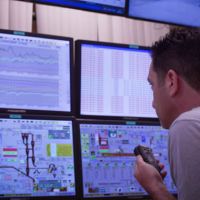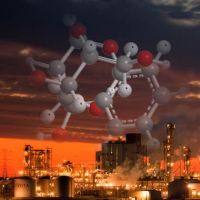Thermophysical Properties
We recognize fluid thermophysical properties are specific to the operation, and in most industrial applications we develop and validate the thermophysical software separately in accordance with the client specifications before the properties are incorporated with the simulation software.
GB Simulation Technology simulation software can also be integrated with most externally available thermophysical property packages.
Some of the GB Simulation Technology thermophysical property software has been released as standalone programs. One of these is EPROP, software for generating thermophysical properties of ethylene, and another is software for STEAM THERMOPHYSICAL PROPERTIES implementing IAPWS-IF97 to generate thermophysical properties of water and steam. The property packages are available separately.
Thermophysical Property Software
Thermophysical properties of ethylene
EPROP generates thermophysical properties of ethylene accurately from the NBS Equation of State. The software was validated and integrated with the GBST Pipeline Simulator (Ethylene Version) running on pipeline networks.
The program generates all thermodynamic and transport properties valid from the triple point (121.3Pa, 103.986K) to 40MPa and 450K.
Steam Thermophysical Properties from IAPWS-IF97
STEAM THERMOPHYSICAL PROPERTY implements IAPWS-IF97 and was developed as a property generating module of the GB Simulation Technology software application for high pressure steam plants.
The software is now available as a Google Play app STEAM THERMOPHYSICAL PROPERTY. It generates accurate thermodynamic and transport properties of water and steam.
The property generation covers the low temperature range from 273.15K to 1073.15K in which pressure can vary between 0MPa and 100MPa. The property generation covers the high temperature range from 1073.15K to 2273.15K in which pressure can vary between 0MPa and 50MPa. The saturation line which starts from (611.213Pa, 273.15K) and ends at (22.064MPa, 647.096K) defines saturated conditions for property generation.
This software can be a useful pocket reference for students, colleges, universities, researchers, scientists, engineers and professionals.
 Advanced modelling and simulation in pipelines cover a wide domain in process engineering, fluid transportation, mechanics of process equipment and safety devices. Innovative simulators built on most state-of-the-art technology help designing a completely new pipeline network that runs at optimal efficiency or expanding an existing one.
Advanced modelling and simulation in pipelines cover a wide domain in process engineering, fluid transportation, mechanics of process equipment and safety devices. Innovative simulators built on most state-of-the-art technology help designing a completely new pipeline network that runs at optimal efficiency or expanding an existing one.
 Plant safety requires items of plant and equipment accomplish safety-critical features which need to be realized by accurate design procedures and installation and during maintenance carried out as part of a planned programme or emergency work. Quantitative analysis of the rapid depressurisation of vessels or pipelines is an essential task during the design and safety analysis of Oil & Gas facilities and other high-pressure installations.
Plant safety requires items of plant and equipment accomplish safety-critical features which need to be realized by accurate design procedures and installation and during maintenance carried out as part of a planned programme or emergency work. Quantitative analysis of the rapid depressurisation of vessels or pipelines is an essential task during the design and safety analysis of Oil & Gas facilities and other high-pressure installations.
 The simulator takes an active participation in the pipeline operations in ensuring safety and economy. Steady-state simulations provide flow assurance workflows for front-end system design, line modifications and production operations. Transient state implies the effect of time over the operational behaviour of an industrial facility. Successful pipeline operations is achieving the profit optimality by the correct management of the capacity, inventory, and storage while avoiding losses and minimizing the operational cost.
The simulator takes an active participation in the pipeline operations in ensuring safety and economy. Steady-state simulations provide flow assurance workflows for front-end system design, line modifications and production operations. Transient state implies the effect of time over the operational behaviour of an industrial facility. Successful pipeline operations is achieving the profit optimality by the correct management of the capacity, inventory, and storage while avoiding losses and minimizing the operational cost.
 A necessary component of plant’s safety management is the training of operating personnel. Participating operating personnel could experience the behaviour of pipeline under widely different operating conditions, the practical significance of operating limits and the manipulation of operating parameters for the optimal results. ‘What if’ querying, investigating safe operating limits, process optimization, planning and scheduling can be experienced from offline simulation.
A necessary component of plant’s safety management is the training of operating personnel. Participating operating personnel could experience the behaviour of pipeline under widely different operating conditions, the practical significance of operating limits and the manipulation of operating parameters for the optimal results. ‘What if’ querying, investigating safe operating limits, process optimization, planning and scheduling can be experienced from offline simulation.
 Fluid thermophysical properties are specific to the operation and in most industrial applications the thermophysical software is developed and validated separately in accordance with the client specifications before the properties are incorporated with the simulation software. GB Simulation Technology simulation software can also be integrated with most externally available thermophysical property packages. Some of the GB Simulation Technology thermophysical property software has been released as standalone programs.
Fluid thermophysical properties are specific to the operation and in most industrial applications the thermophysical software is developed and validated separately in accordance with the client specifications before the properties are incorporated with the simulation software. GB Simulation Technology simulation software can also be integrated with most externally available thermophysical property packages. Some of the GB Simulation Technology thermophysical property software has been released as standalone programs.

